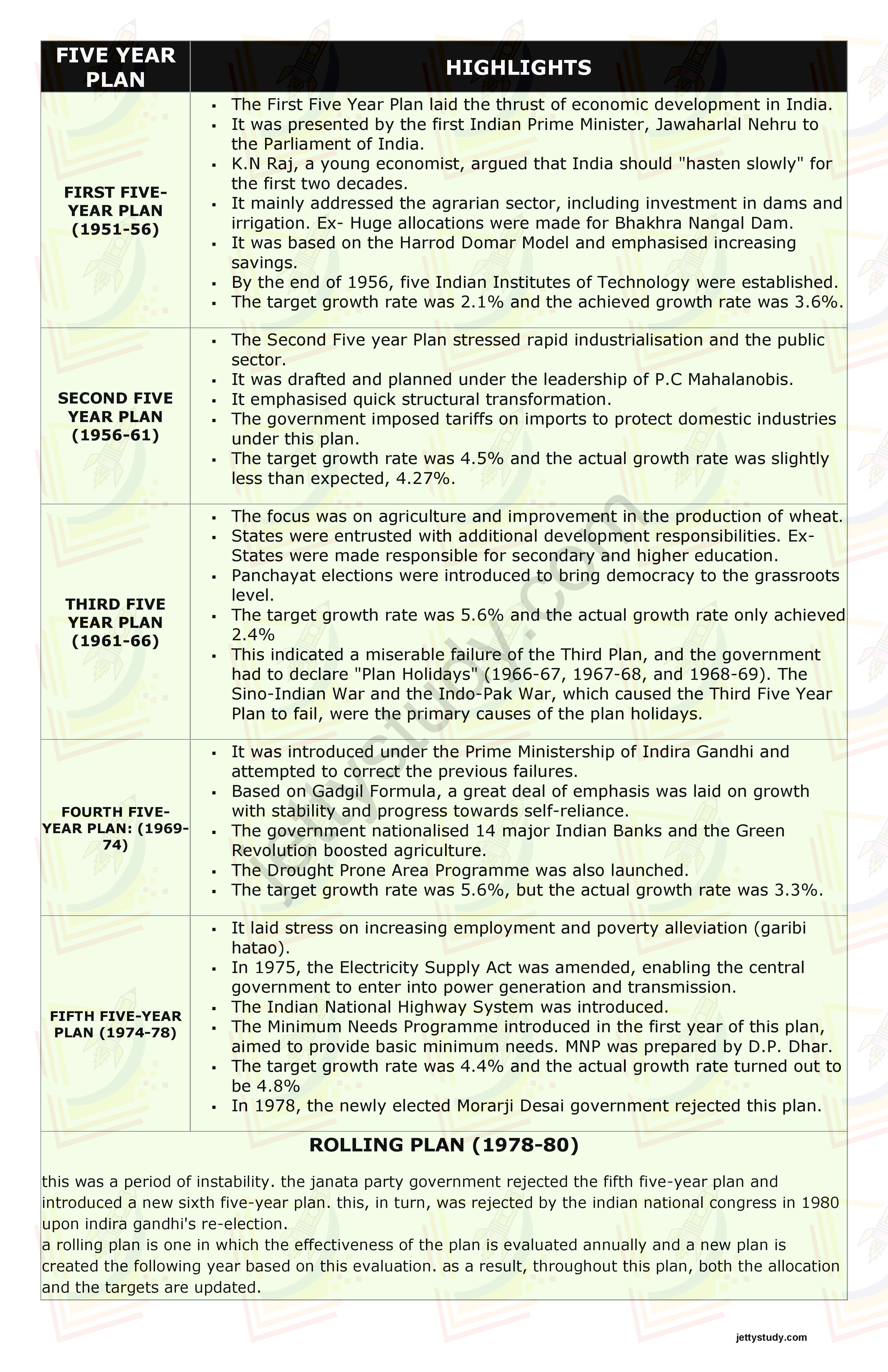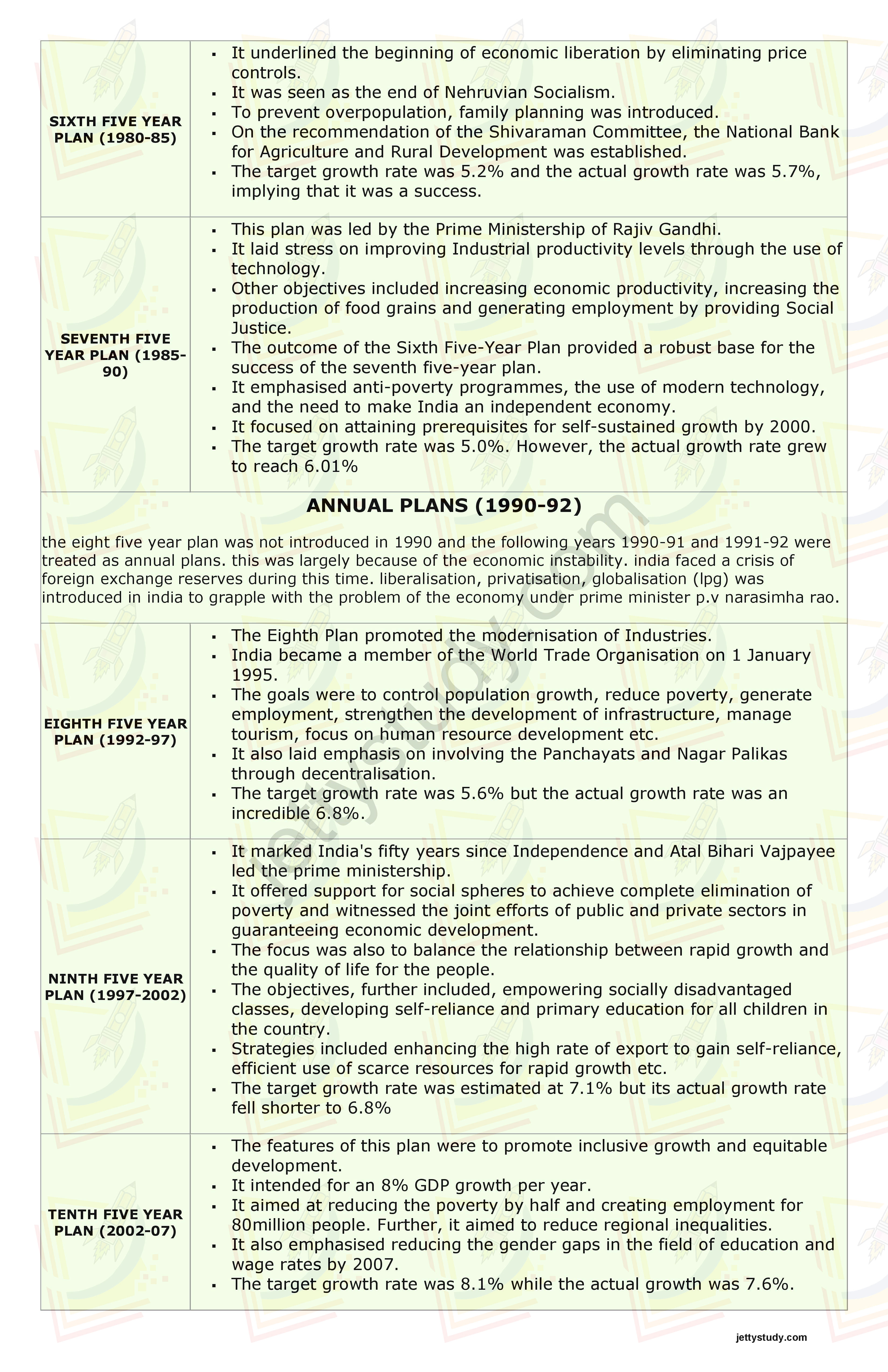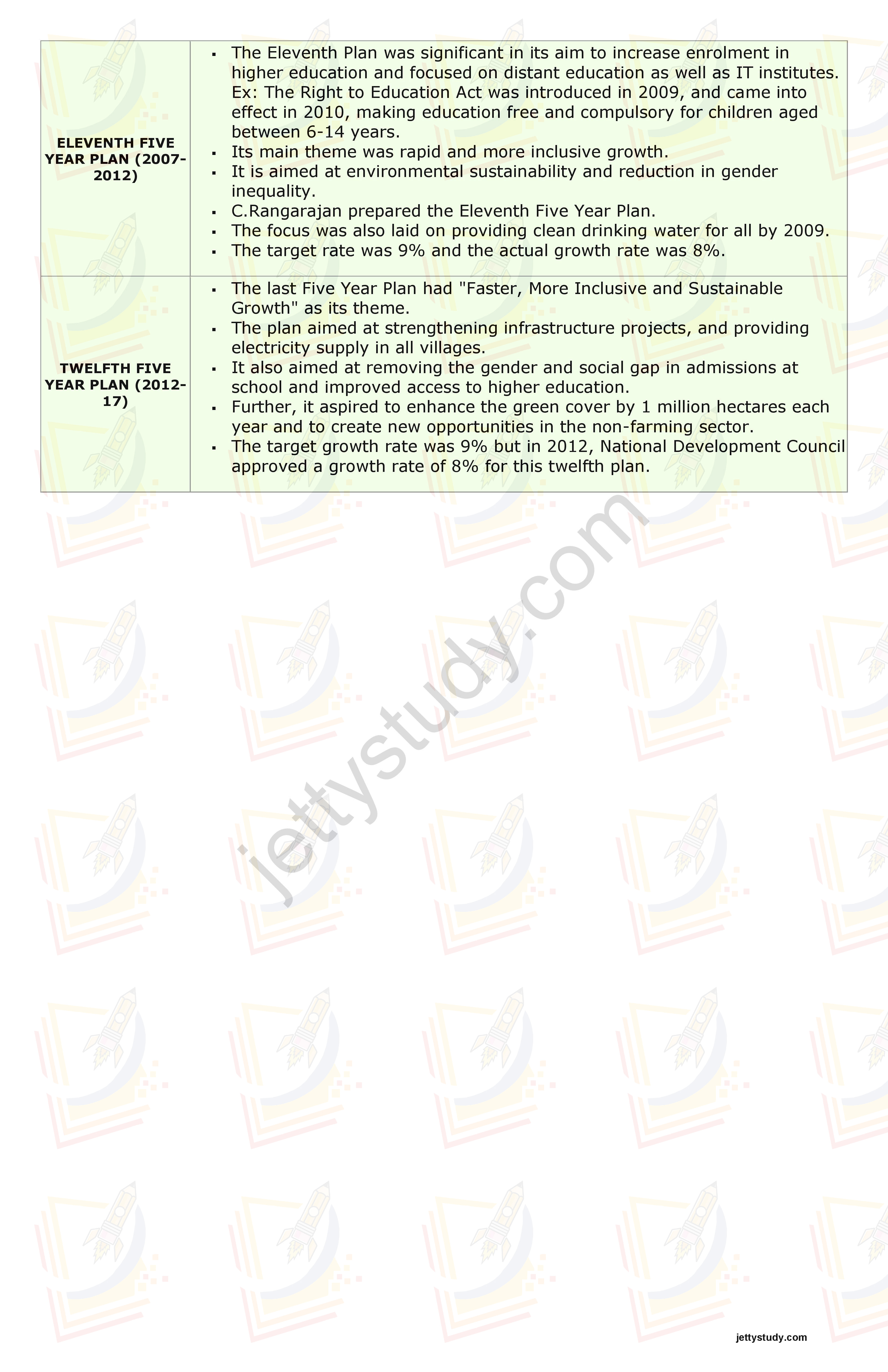INDIAN PLANNING
Planning is a continuous process that involves choices and decision making about allocation of available resources with the objective of achieving effective and efficient utilisation and growth of these resources. Indian planning refers to the economic development strategies and policies implemented by the Government of India in order to promote industrialization, reduce poverty, and improve the standard of living for its citizens. The planning process in India began with the adoption of the Five Year Plans, which were implemented starting in 1951. These plans outlined the goals and targets for economic growth and development in the country, and were based on the principles of mixed economy, which emphasized both public and private sector investment and production.
In India, planning is done both at the center as well as the state level. Economic planning is done by the central authority after a complete survey of the economic situation. The policy objectives are designed based on the future development goals of the country.
In India, until 2014, planning was the responsibility of the National Planning Commission that was established on March 15, 1950. The first five-year plan was prepared by the Planning Commission for the period 1951-56. The first Prime Minister of India, Pandit Jawaharlal Nehru was the first chairman of the Planning Commission. The Prime Minister was always the ex-officio chairman of the Planning Commission. The Deputy Chairman who was nominated by commission held the rank of a cabinet minister.
In 2014, the government led by Prime Minister Narendra Modi dissolved the Planning Commission and replaced it by the think tank called NITI Aayog. NITI here, stands for National Institution for Transforming India.
FIVE-YEAR PLANS OF INDIA
From 1947 to 2017, the Indian economy was premised on the concept of planning. This was carried through the Five-Year Plans, developed, executed, and monitored by the Planning Commission (1951-2014) and the NITI Aayog (2015-2017). With the prime minister as the ex-officio chairman, the commission has a nominated deputy chairman, who holds the rank of a cabinet minister. Montek Singh Ahluwalia is the last deputy chairman of the commission (resigned on 26 May 2014). The Twelfth Plan completed its term in March 2017
FIRST PLAN (1951–1956)
The first Indian Prime Minister, Jawaharlal Nehru, presented the First Five-Year Plan to the Parliament of India and needed urgent attention. The First Five-year Plan was launched in 1951 which mainly focused in the development of the primary sector. The First Five-Year Plan was based on the Harrod–Domar model with few modifications.
This five years plan's president was Jawaharlal Nehru and Gulzarilal Nanda was the vice-president. The motto of first five years plan was Development of agriculture' and the aim was to solve different problems that formed due to the partition of the nation, second world war. Rebuilding the country after independence was the vision of this plan. Another main target was to lay down the foundation for industry, agriculture development in the country and to provide affordable healthcare, education in low price to the folks
SECOND PLAN (1956–1961)
The Second Plan focused on the development of the public sector and "rapid Industrialisation". The plan followed the Mahalanobis model, an economic development model developed by the Indian statistician Prasanta Chandra Mahalanobis in 1953. The plan attempted to determine the optimal allocation of investment between productive sectors in order to maximise long-run economic growth. It used the prevalent state-of-the-art techniques of operations research and optimization as well as the novel applications of statistical models developed at the Indian Statistical Institute.
THIRD PLAN (1961–1966)
The Third Five-year Plan stressed agriculture and improvement in the production of wheat, but the brief Sino-Indian War of 1962 exposed weaknesses in the economy and shifted the focus towards the defence industry and the Indian Army. In 1965–1966, India fought a War with Pakistan. There was also a severe drought in 1965. The war led to inflation and the priority was shifted to price stabilisation. The construction of dams continued. Many cement and fertilizer plants were also built. Punjab began producing an abundance of wheat.
Many primary schools were started in rural areas. In an effort to bring democracy to the grass-root level, Panchayat elections were started and the states were given more development responsibilities. For the first time India resorted to borrowing from IMF. Rupee value devalued for the first time in 1966.
FOURTH PLAN (1969–1974)
The Fourth Five-Year Plan adopted the objective of correcting the earlier trend of increased concentration of wealth and economic power. It was based on the Gadgil formula focusing on growth with stability and progress towards self reliance. At this time Indira Gandhi was the prime minister.
• The concept of a buffer stock was first introduced and a buffer stock of 5 million tonnes of food grains was envisaged
• The Drought Prone Area Program (DPAP) was launched FIFTH PLAN (1974–1978)
The Fifth Five-Year Plan laid stress
on employment, poverty alleviation (Garibi Hatao), and justice. The plan also focused on self-reliance in agricultural production and defence. In 1978 the newly elected Morarji Desai government rejected the plan. The Electricity Supply Act was amended in 1975, which enabled the central government to enter into power generation and transmission.



